第53章
The class of fishes is also oviparous.Those among them which have the uterus low down lay an imperfect egg for the reason previously given,' but the so-called 'selache' or cartilaginous fishes produce a perfect egg within themselves but are externally viviparous except one which they call the 'frog'; this alone lays a perfect egg externally.The reason is the nature of its body, for its head is many times as large as the rest of the body and is spiny and very rough.
This is also why it does not receive its young again within itself nor produce them alive to begin with, for as the size and roughness of the head prevents their entering so it would prevent their exit.And while the egg of the cartilaginous fishes is soft-shelled (for they cannot harden and dry its circumference, being colder than birds), the egg of the frog-fish alone is solid and firm to protect it outside, but those of the rest are of a moist and soft nature, for they are sheltered within and by the body of the mother.
The young are produced from the egg in the same way both with those externally perfected (the frog-fishes) and those internally, and the process in these eggs is partly similar to, partly different from that in birds' eggs.In the first place they have not the second umbilicus which runs to the chorion under the surrounding shell.The reason of this is that they have not the surrounding shell, for it is no use to them since the mother shelters them, and the shell is a protection to the eggs against external injury between laying and hatching out.Secondly, the process in these also begins on the surface of the egg but not where it is attached to the uterus, as in birds, for the chick is developed from the sharp end and that is where the egg was attached.The reason is that the egg of birds is separated from the uterus before it is perfected, but in most though not all cartilaginous fishes the egg is still attached to the uterus when perfect.While the young develops upon the surface the egg is consumed by it just as in birds and the other animals detached from the uterus, and at last the umbilicus of the now perfect fish is left attached to the uterus.The like is the case with all those whose eggs are detached from the uterus, for in some of them the egg is so detached when it is perfect.
The question may be asked why the development of birds and cartilaginous fishes differs in this respect.The reason is that in birds the white and yolk are separate, but fish eggs are one-coloured, the corresponding matter being completely mixed, so that there is nothing to stop the first principle being at the opposite end, for the egg is of the same nature both at the point of attachment and at the opposite end, and it is easy to draw the nourishment from the uterus by passages running from this principle.This is plain in the eggs which are not detached, for in some of the cartilaginous fish the egg is not detached from the uterus, but is still connected with it as it comes downwards with a view to the production of the young alive;in these the young fish when perfected is still connected by the umbilicus to the uterus when the egg has been consumed.From this it is clear that previously also, while the egg was still round the young, the passages ran to the uterus.This happens as we have said in the 'smooth hound'.
In these respects and for the reasons given the development of cartilaginous fishes differs from that of birds, but otherwise it takes place in the same way.For they have the one umbilicus in like manner as that of birds connecting with the yolk,- only in these fishes it connects with the whole egg (for it is not divided into white and yolk but all one-coloured),- and get their nourishment from this, and as it is being consumed the flesh in like manner encroaches upon and grows round it.
Such is the process of development in those fish that produce a perfect egg within themselves but are externally viviparous.